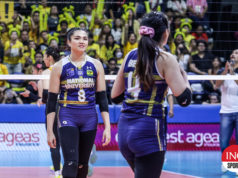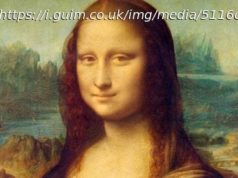“I don’ t live for fashion, I live for beauty and style.” So says haute couture eminence grise Andre Leon Talley in the opening seconds of Kate Novack’s “The Gospel According to Andre, ” and the director takes those words as gospel.
“I don’ t live for fashion, I live for beauty and style.” So says haute couture eminence grise Andre Leon Talley in the opening seconds of Kate Novack’s “The Gospel According to Andre, ” and the director takes those words as gospel. The documentary is a deeply loving, frequently beautiful testament to the former Vogue editor, who rose from humble beginnings in North Carolina to become arguably the high fashion world’s first major African-American tastemaker, as well as the type of multi-lingual, Russian-lit-citing public intellectual who is perfectly at ease gossiping on TV with Wendy Williams. At times hesitant to press Talley on some uncomfortable but important aspects of his life, the film amounts to essentially a long, intimate brunch conversation with its inimitable subject, and for those with even a passing interest in fashion, that should be plenty.
Best known for his long association with Vogue, Talley has long stood out even in the peacockish world of couture: his imposing six-and-a-half-foot profile, usually decked out in lavish capes and jackets, is as much a staple of Paris runways as flashbulbs and champagne flutes. Alongside plenty of vintage footage, Novack follows him around New York City, his home in White Plains, and his hometown of Durham throughout the summer and fall of 2016, giving fly-on-the-wall access as he dresses famous friends and mulls on the upcoming presidential election.
“Gospel” is Novack’s first solo feature, though she co-directed “Eat This New York” with husband Andrew Rossi, whose “Page One: Inside the New York Times” she also produced, and she seems to have an implicit understanding that shot composition is every bit important in a documentary as in a narrative feature. She and cinematographer Bryan Sarkinen capture some wonderful imagery here, and she does deft work to weave in eye-popping runway footage from fashion eras past and present.
There are plenty of famous names who show up to sing Talley’s praises – Tom Ford, Diane von Furstenberg, Marc Jacobs, Manolo Blahnik, and of course Talley’s primary foil Anna Wintour, who credits him for teaching her about fashion in her earliest days as Vogue editor-in-chief – but some of the most memorable anecdotes come from his childhood friends. Through them and Talley’s memories, we get a crystal clear image of the fashionista as a young man, raised by his beloved grandmother, and eternally fascinated with both the issues of Vogue he’ d pore over in the library, and the style of his grandmother and her friends as they donned their finest hats every Sunday for church. At one point, Talley goes home to reminisce with his former high school teacher, and recalls her old wardrobe with frightening detail.
In the ‘70s he moved to New York, and got a job answering the phones for Andy Warhol. Described by Fran Lebowitz as perhaps the only Studio 54 regular who wasn’ t there for the sex and the drugs, his diligence and passion as a fashion journalist would see him rise to gigs in Paris with Women’s Wear Daily and back in New York at Vogue. But it was through a chance meeting with legendary fashion editor Diana Vreeland, whom he regarded as something of a second mother, that he first ascended to the upper echelons. (It’s touching to see Talley, who is on a first-name basis with just about everyone, still refer to her exclusively as “Mrs. Vreeland.”)
The grandson of a sharecropper, Talley is keenly aware of the subtle and sometimes overt ways that racism has followed him throughout his career, from the vapid scenesters who once dubbed him “Queen Kong” to the rumormongers who assumed the only reason someone like Vreeland would welcome a young black man into her inner circle was because she must be sleeping with him. Talley sometimes seems hesitant to talk about these incidents, or at least eager to note that he always managed to rise above them, but he comes near tears when he wonders what his grandmother would have thought of seeing Michelle Obama on the cover of Vogue.
There doesn’ t seem to have been much of a boundary between Talley’s personal and professional lives, and his apparent lack of a serious romantic partner is brushed off with a few quick asides. “I have no love life, ” he says matter-of-factly, and Novack doesn’ t press. But perhaps she just understands when his silence speaks for itself. Though much of the 2016 footage sees Talley discussing last year’s election, he doesn’ t mention Donald Trump directly; fast-forward to January of this year, and Talley is live-blogging the inauguration in a living room with Maureen Dowd. He’s almost defiant as he gives a glowing assessment of Melania’s wardrobe for the occasion – chuckling at what a mess his Twitter and Instagram mentions are about to become – but when Trump takes the oath of office he goes quiet, and Novack’s camera zeroes in on him as he watches, his face tracing a path from bemusement to disbelief to head-shaking sadness. Even for a man as voluble and eloquent as Talley, so many things still remain unsaid.




![Pożar centrum handlowego Marywilska 44 w Warszawie [ZDJĘCIA]](http://nhub.news/wp-content/uploads/2024/05/thumb134de06664f12c69cca72a136482c0ae-100x75.jpeg)

